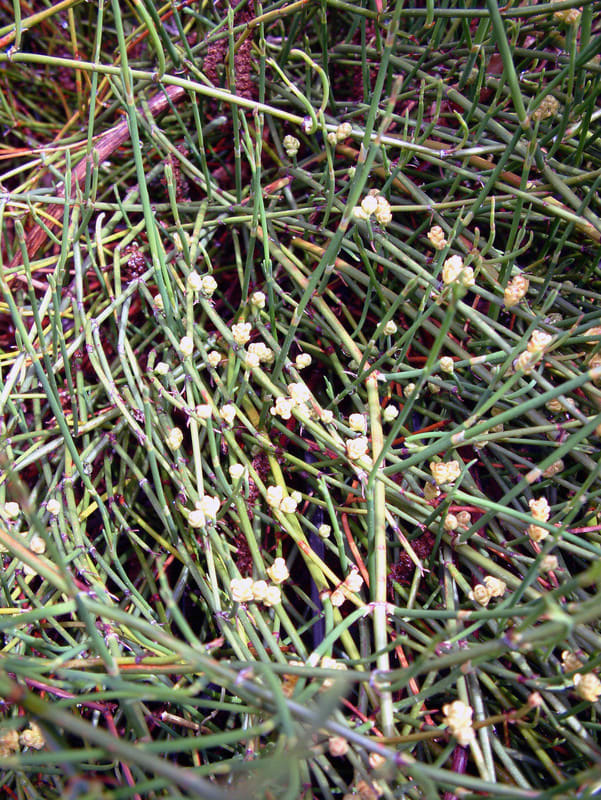
🌿 Morphology
🌞 Growing conditions
🌍 Origin and family
🌾 Uses
Warning: Despite the care taken in writing this sheet, it is essential to cross-reference sources before using or consuming any plant. When in doubt, consult a qualified professional
Permaculture uses
Primarily used medicinally as a source of ephedrine. Not commonly cultivated for food or garden utility. Caution: Ephedra contains potent alkaloids and should only be used under expert guidance.
Permapeople description
Ephedra sinica is a plant species native to northeastern China, Russia, and Korea. It is the source of the drug ephedrine, a stimulant and decongestant.
Botanical description
Ephedra sinica is a shrubby, evergreen, dioecious gymnosperm typically growing to a height of 0.5-1 meter. It features slender, jointed green stems that perform photosynthesis. Leaves are reduced to small, scale-like bracts at the nodes. Male plants produce small, cone-like structures containing pollen, while female plants produce seed cones with fleshy bracts. The plant is wind-pollinated.
Companion planting
Due to its medicinal properties and potential allelopathic effects (inhibiting growth of nearby plants), companion planting information is limited. It generally prefers dry, sunny conditions and may not thrive in close proximity to plants requiring consistently moist soil. Careful observation is needed.
Propagation methods
Propagation is typically achieved through seeds or cuttings. Seed germination can be slow and irregular. Cuttings taken from semi-hardwood can be rooted in a well-draining medium.
History and traditions
Ma Huang has a long history of use in traditional Chinese medicine, dating back thousands of years. It was primarily used as a bronchodilator and stimulant. Its use has spread to other cultures and is used in various herbal remedies, though its use is now regulated due to concerns about its stimulant effects.
Usage calendar
Flowering typically occurs in spring (April-May). Harvesting of stems for medicinal purposes usually occurs in late summer or fall, after the active compounds are concentrated. Sowing seeds is best done in early spring.
